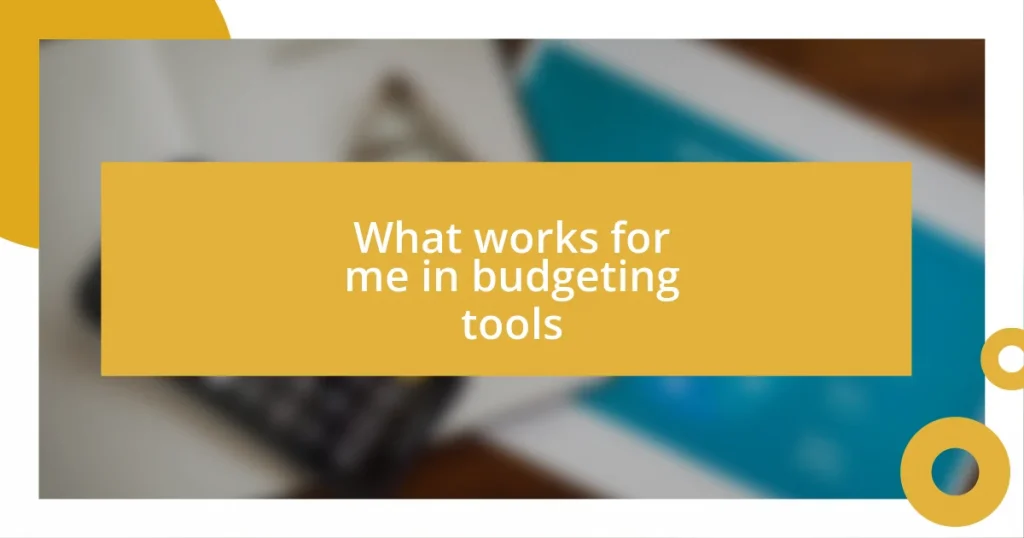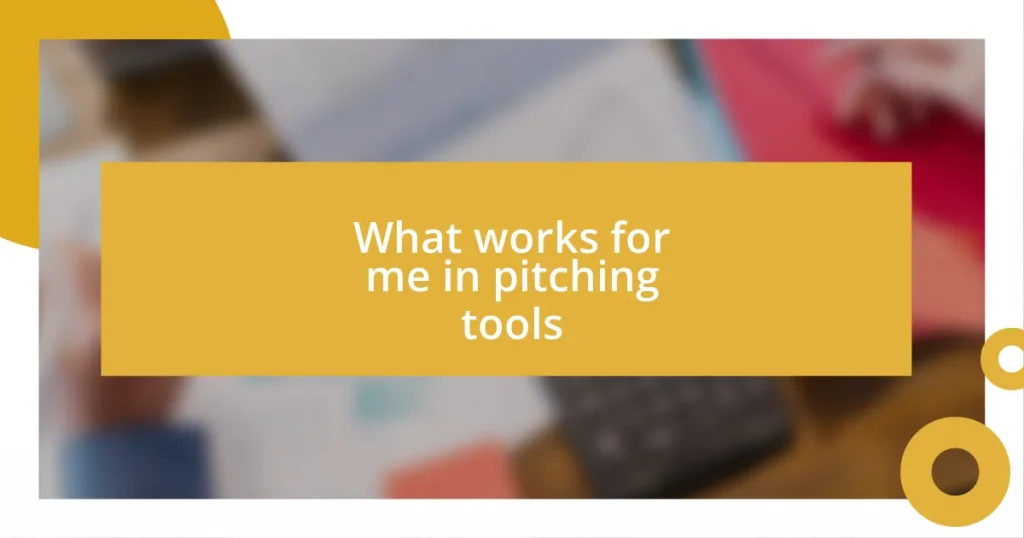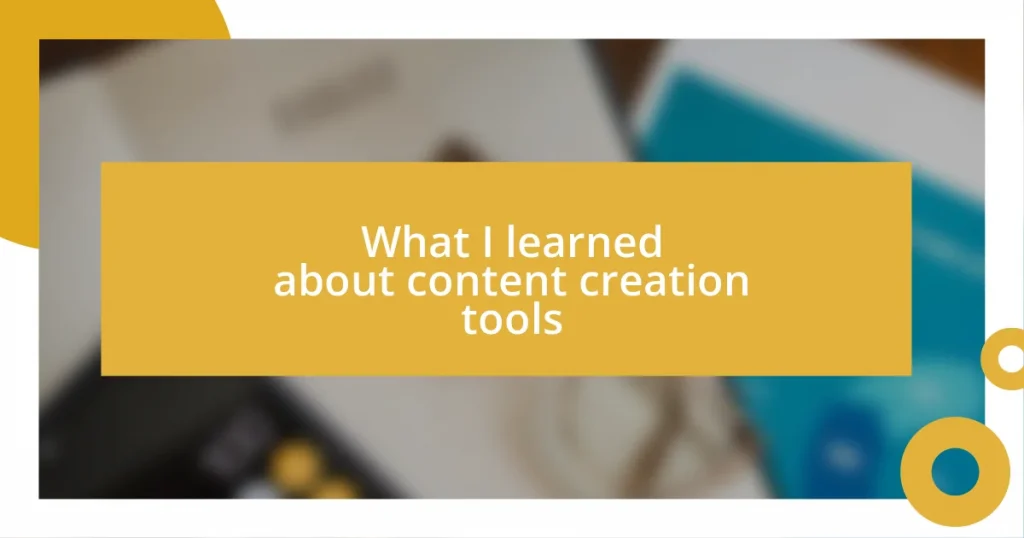Key takeaways:
- Building strong investor relationships relies on understanding their motivations, fostering personal connections, and engaging in open dialogue.
- Identifying the right investors involves aligning values and missions, as well as evaluating their emotional and financial support using comparison tools.
- Nurturing long-term partnerships requires ongoing communication, celebrating shared milestones, and proactively involving investors in business decisions.

Understanding Investor Relationships
Building strong investor relationships requires a genuine understanding of their motivations and needs. I remember my first pitch meeting where I focused solely on numbers and projections, only to realize later that investors wanted to connect on a personal level. Has anyone else felt that shift when the conversation turns more relational?
When I began to actively listen and engage, I noticed a significant change. One afternoon, over coffee, a seasoned investor shared his own struggles and triumphs in the industry. It was a lightbulb moment for me—seeing the human side of investing transformed our dynamic from transactional to collaborative. We must ask ourselves: how often do we delve into the personal stories behind the figures?
Moreover, emotional intelligence plays a pivotal role in nurturing these relationships. I’ve found that expressing vulnerability, sharing challenges, and celebrating small victories together fosters trust. It’s all about building a partnership where both parties feel valued and understood. How do we create environments where open dialogue can flourish?

Identifying the Right Investors
Identifying the right investors is crucial for any entrepreneur seeking support and guidance. I’ve learned that aligning your mission and vision with potential investors is essential. During one of my early ventures, I wasted time pursuing funds from investors who were more focused on rapid returns than on the sustainability of the business. It was a tough lesson, but it taught me to look for those who share a commitment to long-term growth and values that resonate with my own.
In my experience, going beyond the typical investor profiles is insightful. This means digging deeper into their previous investments, understanding their industry expertise, and assessing if they are genuinely passionate about your field. I recall a time when I met an investor at a networking event who had previously backed an environmental startup. When I shared my eco-friendly business model, her eyes lit up. That connection was rooted not just in interest, but in her personal commitment to sustainability, highlighting the importance of shared values.
To make identifying the right fit even easier, consider using a comparison approach to evaluate potential investors. It allows you to clarify what each investor brings to the table, both in financial terms and emotional support. Below is a simple comparison table that I often refer to when assessing potential relationships:
| Criteria | Investor A | Investor B |
|---|---|---|
| Investment Size | $100,000 | $250,000 |
| Industry Knowledge | Limited | Extensive |
| Value Alignment | High | Moderate |
| Support Level | Hands-on | Passive |
Using such a clear layout can significantly help in making informed decisions. Have you also found tools like these helpful in your search for investors?

Crafting Your Unique Value Proposition
Crafting a unique value proposition (UVP) is critical to standing out in the eyes of potential investors. I remember dedicating a weekend to distilling what truly set my business apart. It wasn’t just about the product; it was about the passion behind it. I found that sharing the story of how my personal experiences shaped the business made my pitch resonate more deeply. This emotional connection often invited further dialogue, making investors feel more invested in my journey.
To develop an effective UVP, consider these key elements:
- Clear Problem Statement: What specific problem does your business address?
- Unique Solution: How does your approach differ from competitors?
- Emotional Appeal: What personal passion drives your mission?
- Target Audience Definition: Who are your ideal customers, and why will they care?
- Quantifiable Benefits: What measurable outcomes can you promise?
Reflecting on these components can empower you to convey your vision confidently. Each of these points encapsulates not just what you offer but also the essence and stories behind your venture, making it relatable and compelling to investors. Have you thought about what makes your story unique?

Effective Networking Strategies
Building relationships with investors often hinges on effective networking strategies, and I’ve found that being genuinely approachable goes a long way. At one particular conference, I made a point to engage in conversations without pitching my business right away. I focused instead on listening and understanding their interests. This not only fostered trust but also opened up avenues for meaningful connections later on. Have you considered how just being present in the moment can transform a casual meeting into a potential partnership?
Another approach I’ve employed is leveraging social media to connect and maintain relationships. I distinctly remember reaching out to an investor on LinkedIn after a panel discussion we both attended. I complimented their insights and shared an article I thought they might find interesting. This small gesture turned into an ongoing dialogue, allowing me to share my progress and get valuable feedback over time. It’s fascinating how a genuine follow-up can keep the lines of communication open, isn’t it?
Finally, attending industry-specific events truly amplifies networking efforts. I recall one event where I prepared by setting specific goals for who I wanted to meet. By creating a list of potential investors based on my research, I felt more focused and less overwhelmed. This targeted approach led me to connect with someone who eventually became a crucial mentor. Do you also find that setting clear objectives makes your networking more fruitful?

Building Trust and Credibility
Establishing trust and credibility with investors is a journey that requires transparency and authenticity. I vividly recall a time when I faced potential investors with a setback in my business. Instead of sugarcoating the situation, I chose to be candid about the challenges I was grappling with. I believe this honesty not only strengthened our rapport but also showed that I was committed to facing difficulties head-on rather than glossing over them. Isn’t it interesting how vulnerability can lead to deeper connections?
Moreover, consistency is key. I remember when I started sending monthly updates to my investors, covering both wins and losses. These updates were more than just a status report; they reflected my unwavering commitment to keeping the lines of communication open. This ongoing dialogue cultivated a sense of partnership, making investors feel like they were part of the journey rather than mere spectators. Have you found that regular communication fosters a similar level of trust?
Finally, demonstrating expertise can effectively enhance credibility with potential investors. I once participated in a panel discussion where I shared insights based on my personal experiences in the industry. As I answered questions authentically and provided actionable advice, I noticed a shift in the room. Investors began approaching me afterward, eager to learn more. This taught me that showcasing genuine expertise not only builds trust but can spark interest that opens doors to future opportunities. How do you leverage your unique insights to build credibility in your own endeavors?

Maintaining Ongoing Communication
Communication is truly the lifeblood of any relationship, especially when it comes to investors. I remember my early days when I used to hesitate in reaching out post-meeting. One time, after a particularly engaging conversation at an industry dinner, I decided to send a simple “thanks for the chat” email the next day. To my surprise, this small gesture opened the door for a deeper connection. Have you ever considered how a brief follow-up can solidify an impression?
Along the way, I also discovered the power of storytelling in maintaining ongoing communication. I recall sharing a personal story of how my business idea evolved over time during a quarterly update call with my investors. The feedback was remarkable. They appreciated the insight into my journey and felt more invested—both emotionally and financially. Isn’t it fascinating how sharing experiences fosters a sense of belonging and collaboration?
Lastly, I’ve found that being proactive about seeking advice enhances communication flow. There was a time when I faced a particularly challenging decision, and instead of waiting for my investors to reach out, I took the initiative to seek their opinions. I sent an email elaborating on the situation and asking for their insights. They enjoyed being included in the decision-making process and responded with valuable feedback. It’s incredible how inviting others to contribute strengthens ties, isn’t it?

Nurturing Long-Term Partnerships
Nurturing long-term partnerships is like tending to a relationship; it needs attention and care. I remember a meeting where we discussed future goals, and I took the opportunity to ask my investors about their aspirations, too. This simple act of curiosity not only deepened our bond but also allowed me to align my vision with theirs. Isn’t it remarkable how mutual understanding can enhance a partnership?
In another instance, I made it a point to celebrate both my milestones and those of my investors. When one of my investors achieved a personal milestone, I sent them a heartfelt message acknowledging their success. This gesture not only pleased them but also reinforced that our relationship was about more than just business. It’s moments like these that show investment goes beyond financial stakes; it’s about shared journeys. Have you experienced how small acknowledgments can have a big impact?
I’ve also learned to embrace change as an opportunity for growth. When my business direction shifted, I proactively engaged my investors about these changes. Instead of waiting for them to ask, I sent out a detailed plan outlining the new strategy. The trust they placed in me grew because I involved them early in the process. Doesn’t taking the initiative in uncertain times create stronger alliances?















